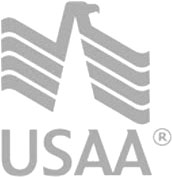We recently discussed how to secure funds from wealthy family members and acquaintances to use to buy a home. Not really – we discussed standard home loans such as the 30 year fixed, adjustable rate mortgages (ARMS), and short-term fixed rate/balloon loans. Today we’ll focus on some aspects of those options as well as some other mortgage “glory day” products that may, or may not, be or become available again.
Really, What’s the Point?
When you apply for a mortgage there will be an associated interest rate with the loan option you choose. That interest rate will vary based on the points you choose to pay. A point is 1% of the loan amount. You can opt to pay no points or you can choose to buy down the interest rate by paying points – a percentage of the loan amount.
Essentially, this option is a “pay now or pay later” decision. For example, suppose today’s rate is 4.25% with zero points. That means you will pay 4.25 percent for the life of the loan, on each payment you make while you have this mortgage.
But perhaps you think you will be in the house forever and ever, want smaller payments, and have some cash. Then you may want to choose a lower rate and pay points – such as 4% and 1 point (and there are NO formulas to compute the difference between rates and points; your mortgage lender determines these). Interest rates 1/4 % lower are often, but NOT always, equal to 1 point.)
If you choose a $100,000 loan amount, you can either pay no points up front at 4.25% and a monthly payment of about $492 OR you can pay an extra $1000 at closing (for one point) and have a rate of 4% and a payment of just over $477. Choosing to pay points is a personal decision based on your financial situation, the expected time you will remain in the home, etc. Most people these days opt for zero points because interest rates are low and the payment difference is not significant to them.
Points paid on a mortgage are typically a tax deduction. The IRS tells us you can write off the amount you pay in points if: your mortgage is to buy or build your primary residence; paying points is normal for your market; you use the cash method of accounting; the points were not for other “fees” associated with your mortgage/home purchase; “the funds you provided at or before closing, including any points the seller paid, were at least as much as the points charged”; the points were a percentage of the mortgage amount; and the points are clearly recorded as such on closing documents.
Points are deducted over the life of the loan for refinances (unless parts of the funds are going towards home improvements – ask your tax accountant or click the link above for further confusion on that topic).
Jumbo vs. Conforming and Government versus Conventional
Generally, a mortgage with a loan amount below $417,000 -- except in Alaska, Hawaii or “high cost” areas of the US -- is considered “conforming”. A loan amount above $417,000 is called a “jumbo loan.” These limits may change annually, so be sure to ask your lender in advance.
Conforming loans are sold to Fannie Mae or Freddie Mac and are called conventional conforming loans -- unless the conforming loan is also a government product. If this is the case, the loans are insured by the Federal Housing Authority (FHA) or the Veterans Administration (VA) and a different process is followed. Perhaps we’ll do a future article on Fannie, Freddie, HUD the Hulk, and Sallie Mae – what fun! But keep reading here for some basics.
Back to jumbo loans, these are most often priced higher than conventional loans. This is because they cannot be sold to agencies such as Freddie Mac and Fannie Mae, may be more difficult to place, or expensive to “hold” on the lender’s books. Further, jumbo loans have more risk simply because they are larger and, if a jumbo borrower (referring to mortgage amount, not personal girth) fails to pay his/her mortgage, the cost to the lender can be exorbitant. A jumbo loan, therefore, often also requires a heftier down payment, a closer scrutiny of loan documentation, better FICO scores, and – obviously – higher stable income. So if you want to purchase a big, expensive mansion but have little cash and lousy credit, you may have a difficult time obtaining home financing these days.
Government insured loans – FHA and VA – are not offered in “jumbo sizes”. Note, however, that all loans may have a higher limit if you buy a “multi-family” or a house intended to legally occupy more than one family (such as a “double block”, 4 unit home, etc.) Multi-family homes have other requirements associated. That topic may also be one for a future blog. Stay tuned.
As previously mentioned, FHA loans are insured by the Federal Housing Authority. This is an agency within the US Department of Housing and Urban Development (HUD). That does not mean the government gives you the loan. Instead, it approves lenders to offer these loans and then insures the loans after closing. Therefore, as the old song goes, you better shop around, because mortgage companies will offer different rates, fees, credit requirements, etc.
There are many advantages and a few disadvantages to FHA loans. The “Pros” include the fact that FHA loans typically require lower FICO scores than conventional loans. That means you may be approved if you have a few flips on your personal credit radar. These loans also often require a lower down payment than conventional loans (3.5% depending on your credit score, for example). These loans can be more lenient regarding gifts for the down payment or closing costs. The qualifying ratios (DTI) requirements may be more favorable (see #4 here). FHA loans may be assumable by the buyers of your home. They are usually eligible for streamline refinances. Borrowers who have filed bankruptcy or foreclosure may be eligible to obtain FHA financing sooner than conventional conforming financing. Mortgage clients may more easily use non-occupying co-borrowers (relatives) to help qualify when obtaining FHA financing. And, there are several different types of FHA loans, such as the FHA Reverse Mortgage, the FHA Energy-Efficient Mortgage, FHA 203 K Rehab Loan, etc.
The biggest disadvantages of typical home purchase FHA loans are considered to be the required mortgage insurance and, often, the resulting monthly payment. Two kinds of MI (mortgage insurance) are required: Up-Front Mortgage Insurance Premium (currently at 1.75% of the base loan amount) and Annual Mortgage Insurance Premium (this varies by term of loan and the loan amount and is paid monthly). In addition, FHA loan limits may be lower than conventional conforming limits in some markets. Ask your delightful mortgage Loan Officer for comparisons, availability, etc.
Sticking with the government angle, A VA loan is guaranteed by the U.S. Department of Veterans Affairs (VA) but only to qualified borrowers and only by qualified lenders. The VA loan was designed to offer home financing to eligible American veterans or their surviving spouses (provided they do not remarry). Similar to FHA loans, the Department of Veterans Affairs (VA) does not lend money for VA loans; it backs loans made by private lenders (banks, savings and loans, or mortgage companies) to veterans who qualify. Military Veterans, Active-duty personnel, Reservists/National Guard members and some surviving spouses can be eligible for these mortgages. Anyone eligible for a VA loan should definitely take advantage of this home mortgage when possible. Check out these benefits – which are kind of like saying a giant “THANK YOU” to those who served:
No down payment is typically required; this depends on the home price and the lender. There is no mortgage insurance. There is a VA Funding Fee, but it can be financed. If the borrower has a service-related disability, they may qualify for the lender to waive the funding fee, further reducing closing costs. This loan may offer VA assistance to veteran borrowers in default due to temporary financial difficulty. Veterans are not generally denied a loan based solely on a low credit score. Borrowers can often refinance to a lower rate within the VA program without re-qualifying for the program through the VA Streamline Refinance Loan. All good!
If you’re interested in home financing but seek the exotic, the unique, something just a little different, consider these home loan offerings:
-Blended Mortgage (AKA 80/10/10 or Combo Loan)
-1031 Exchange (AKA “Swap your prop to beat the tax man”)
-HARP loan (the Home Affordable Refinance Program which has nothing to do with angels or music but which can save you money) …. Bridge Loans (NOT for bridges, but to “bridge the gap”)
-Hard Money Mortgages (AKA subprime or Loan Shark Specials)
-HELOC (home equity line of credit)
-HECM (I take no offense to the name – and it stands for Home Equity Conversion Mortgage and is a Reverse Mortgage)
-NINA, SISA (No Income No Assets; Stated Income Stated Asset -- these were much more prevalent prior to the mortgage crisis and provided entertainment such as the nail technician who stated she made $750,000 annually doing manicures – huh?)
-IO (Interest Only loans -- and the name is missing the obvious next letter U – and see previous comment about the mortgage crisis)
-USDA Mortgage (not an approved cut of meat; instead this loan is offered to rural property owners and has an income limit for borrowers, but requires a low or no down payment)
-GPM (say it out loud quickly as a word, tee hee – a Graduated Payment Mortgage that starts with lower payments which gradually increase, used by people whose predictable income appears to follow that same path, such as a medical student)
-Bond Loans (no, no, not James, but loans that vary by geography, designed for low or medium income borrowers and which are subsidized by a mortgage revenue bond) ….
While I am certain to be missing several loan types, my space allocation has once again been filled … except for this:
A client bought a new home and the broker decided to send flowers for the occasion.
They arrived at the home and the owner read the card; it said “Rest in Peace”.
The owner was angry and called the florist to complain. After he had told the florist of the obvious mistake and how angry he was, the florist said. “Sir, I’m really sorry for the mistake, but rather than getting angry you should imagine this: somewhere there is a funeral taking place today, and they have flowers with a note saying, “Congratulations on your new home”.






















